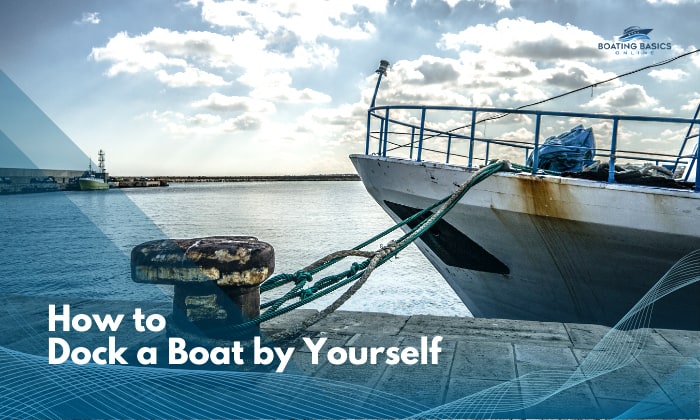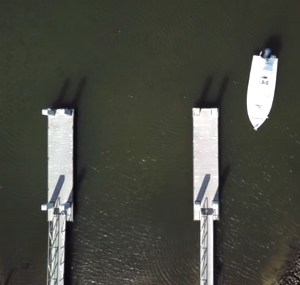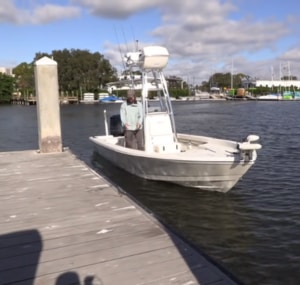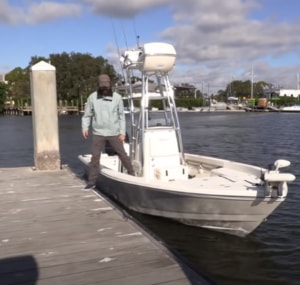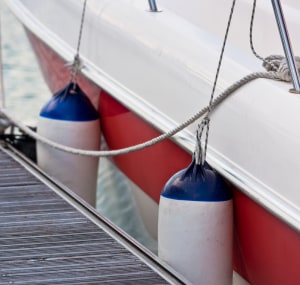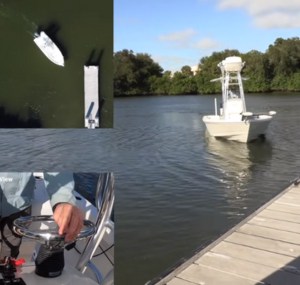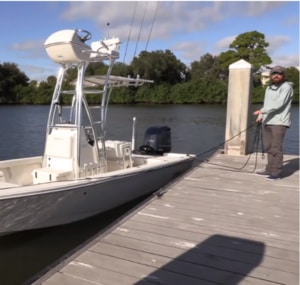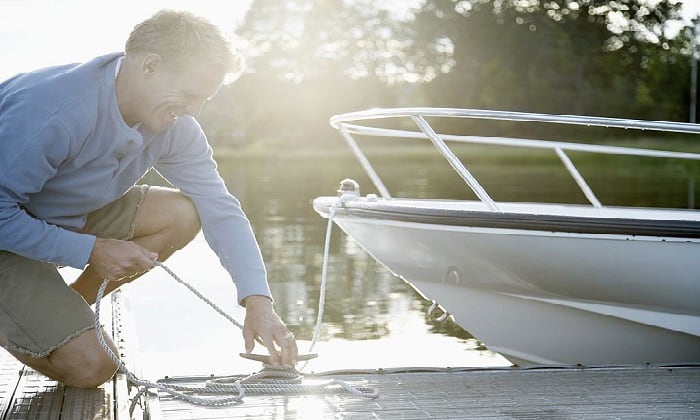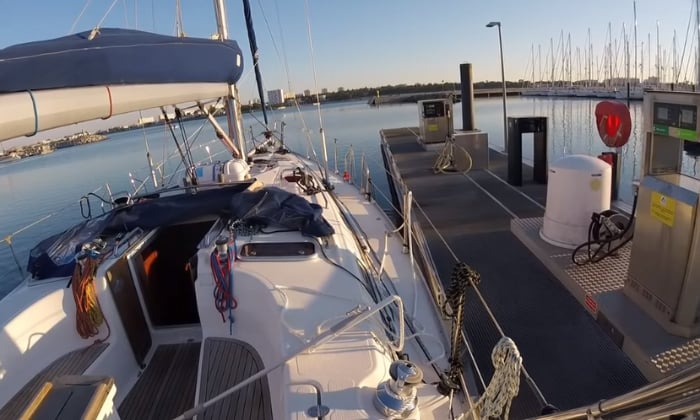For beginners, docking a boat in general is already a tough task. Getting a grasp on how to dock a boat by yourself is doubly challenging, especially if you have to factor in the current weather and water conditions.
Fret not, for this guide will teach you all the essentials of boat docking with steps focusing on docking a boat by yourself. It considers scenarios like approaching a dock on its easy or hard side and the type of boat you’re driving.
I’ve also shared a couple of tips worth remembering.
Table of Contents
Ways to Dock a Boat by Yourself
The dock a boat meaning is to park it in place in these often long structures (aka dock fingers) with cleats meant for mooring boats. At best, you need to only look at three factors when trying to solo park a boat: wind, current, and your vessel’s momentum.
It’s also important to note that certain techniques work best for specific circumstances (i.e., when docking on the dock’s easy or difficult sides).
Some essential things when docking
- Docking line, aft line, and bow line
- Fenders
You don’t necessarily have to use these, especially if you’re docking on the easy side. But they do make your work less hard and safeguard your vessel from damage, so I suggest you always keep them ready to use.
Steps to Dock on the Easy Side of the Dock
“Easy” in this case only ever means the boat will approach with the wind toward dock, and there’s an open slot where you won’t have to use dock lines to keep your vessel from being swept by it.
If there’s an opportunity, always opt for this to spare yourself from needless hassles. Here’s how to do it.
1. Position your boat for docking.
I’ve since learned, based on consistent practice, that the best way to approach any dock is to always allow a margin of error. In this case, I’d suggest aiming for 5 feet to the side of where you want to dock.
Oftentimes, that leaves me with enough space to perform corrective action as the boat approaches. Moreover, it’s just as crucial to get your angle right (i.e., how the bow is facing the dock). I’ve found that positioning it at a 25- or 30-degree angle works well every time, regardless of how strong the winds and currents are.
2. Approach the dock slowly.
Go towards the dock with the boat’s engine solely on idle speed. You only need to use the motor to steer toward the dock.
As you make your approach, be aware of how fast you’re going. By controlling the motor, you’ll always have to offset the strength of the wind so that you won’t end up colliding with the dock. Never crank down on the throttle!
Slow down your momentum as needed by putting the motor in reverse. In the end, as long as you position your boat properly, the current and wind will be doing all the work for you.
3. Use one leg to stop the boat then secure it.
As your boat nears the dock’s edges, you simply need to stand up and tip your foot off on the dock to “catch” the boat with your leg.
From here on, it’s a matter of tying down your boat based on the layout of the dock and the direction of the wind/current. In any case, you’d want to tie the side that’s in the same direction as the wind/current.
Here are a couple of helpful tips when tying down your boat:
How to Tie a Boat to a Dock
Ways to dock on the tough side
Even if I gave the advice above, it’s still worth learning how to maneuver your boat toward a dock’s hard side. You never know when boats will congregate in a marina, after all.
The hard side of a dock is one where you’ll be working against the wind and current. It is recommended to have fenders on when doing this. Follow these steps.
1. Install the fenders and lines.
You’ll be using the aft line, bow line, and other dock lines you have. Just make sure that they’re properly tied to your boat and will be ready to use as you’re docking.
As for the fenders, it’s all a matter of positioning them correctly. Here are a few tips that I always follow:
Keep the lines within arm’s reach so you’ll be able to grab them easily later on.
2. Approach the dock carefully.
Since you’ll be driving in the wind’s opposite direction, you have to use your engine and wheel to control how your boat will head toward the dock. Adjust the speed based on the conditions you’re currently experiencing. Again, go nice and slow.
Once you’re ready to dock, put the motor on neutral. You can go in at about a 45-degree angle, but adjust when needed.
Just make sure that the vessel will end up right next to the dock or just parallel to it without making contact as much as possible. Leave enough cushion so you can reverse and turn the wheel as necessary.
3. Grab the three lines to control and secure the vessel.
Once the boat is in place, snatch the ropes, then step onto the dock. Since the lines are attached to crucial points of the boat, you will have control of the entire vessel once you do this.
If the wind or current is pushing your boat away, just tighten your hold and don’t delay in tying down your watercraft. Adjust the tension to keep it from drifting away.
The same steps apply, including the ones above, to a pontoon boat if that’s what you’re driving.
There’s a variation of this meant for those who want to dock a large boat, at least 60 feet in length.
Solo Docking in a Boat Slip Bow First
I’ve gotten queries about how to dock in a slip bow first, especially in a tight slip, so here’s a brief instruction:
- Slow down. Chances are, you’ll need to have as many opportunities to adjust as possible. Don’t overdo it, though, as this demonstration underscores:
First Singlehanded Docking into my Slip
- Go in the direction of the wind and approach the slip at a 45-degree angle.
- Position the bow in the cleat’s center as much as possible and slowly edge into the slip. Use reverse to slow down and give you time to make the right adjustments.
- Don’t beat yourself up worrying that your boat may rub against the slip. Just position fenders strategically o, and that’ll be one less stressor weighing you down.
- As soon as you near the dock, prepare to tie off the bow line to a cleat or any other similar implement used in your specific slip. Tie it down then do the same for the stern line.
Lastly, it’s better to do this only on a calm day, as I see no reason why you should complicate your situation further by doing this when the wind’s acting up.
Other Tips to Dock a Boat
- Practice makes perfect.
- I always manage to dock properly if I take the time to calm myself. Do deep breathing exercises or whatever helps to keep stress at bay for you.
- Taking the time to plan your approach often pays off. Take special note of how strong the wind and current are.
- Learn to pay attention to more than one thing, especially if the dock’s packed and tight.
- If possible, observe how the wind and the current affect the boat’s drift before docking.
Ways to Tie a Boat to a Dock
You can choose any of these methods, but first, you need to tie the dock line to a cleat in your vessel.
- Tie your lines to a dock cleat.
- Pilings are another good option if there are no cleats present.
- Any secure fixtures will do, such as rings or eye bolts.
FAQs
Tips to use wind and current when docking a boat
This is more of a feel thing. You need to know how the current affects the movement and speed of the boat. As such, it requires constant practice.
What is a propeller torque and how to use it?
Prop torque is the force generated by the propeller, which could cause it to move in a certain direction.
Every time it turns clockwise, the action could cause the bow to move to the left and the stern in the opposite direction when going forward. If it’s counter-clockwise, the effect is reversed.
You can use it to your advantage by, for example, shifting the boat forward or reverse and then giving it some throttle. This will cause the prop to spin, creating the said force, which allows you to tweak the boat’s orientation and position without moving forward or back.
A dock and a slip: what is the difference?
A slip is part of a dock. Docks are long structures that have space for boats to moor on. They may or may not have slips, which are parking spaces often meant to accommodate one boat.
Conclusion
The steps for docking explained may appear like a walk in the park, but it really takes practice to master them.
Because you’re docking on the easy side doesn’t mean you’ll get a pass in learning how current and wind affect your boat, all the more so for docking on the hard side or approaching a slip bow first. In the end, experience is the best teacher when learning how to dock a boat by yourself.

“My intention from the first day establishing Boating Basics Online is to provide as much help as possible for boaters who want to experience a first safe and convenient trip. So feel free to join us and share your beautiful journeys to the sea!”

